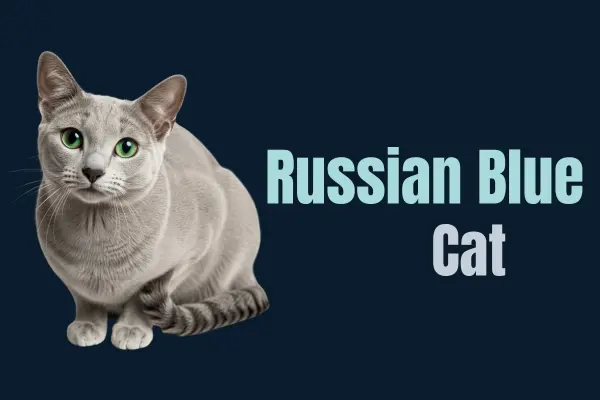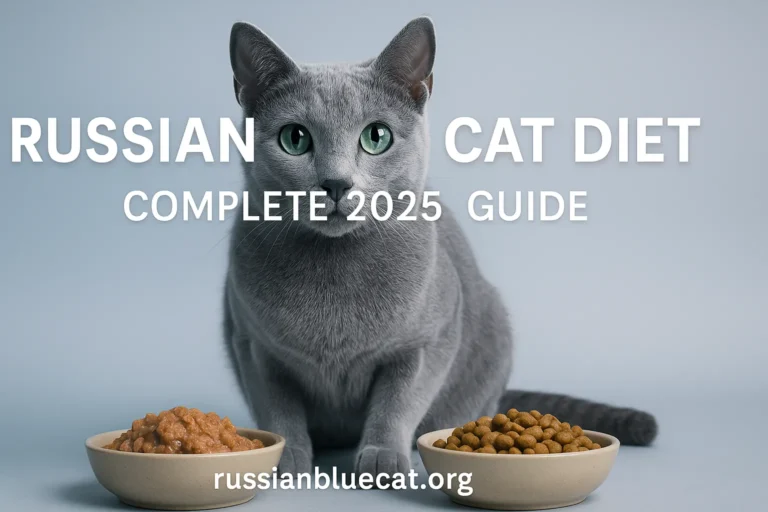Russian Blue Cat Lifespan: 7 Secrets to a Longer, Healthier Life in 2025
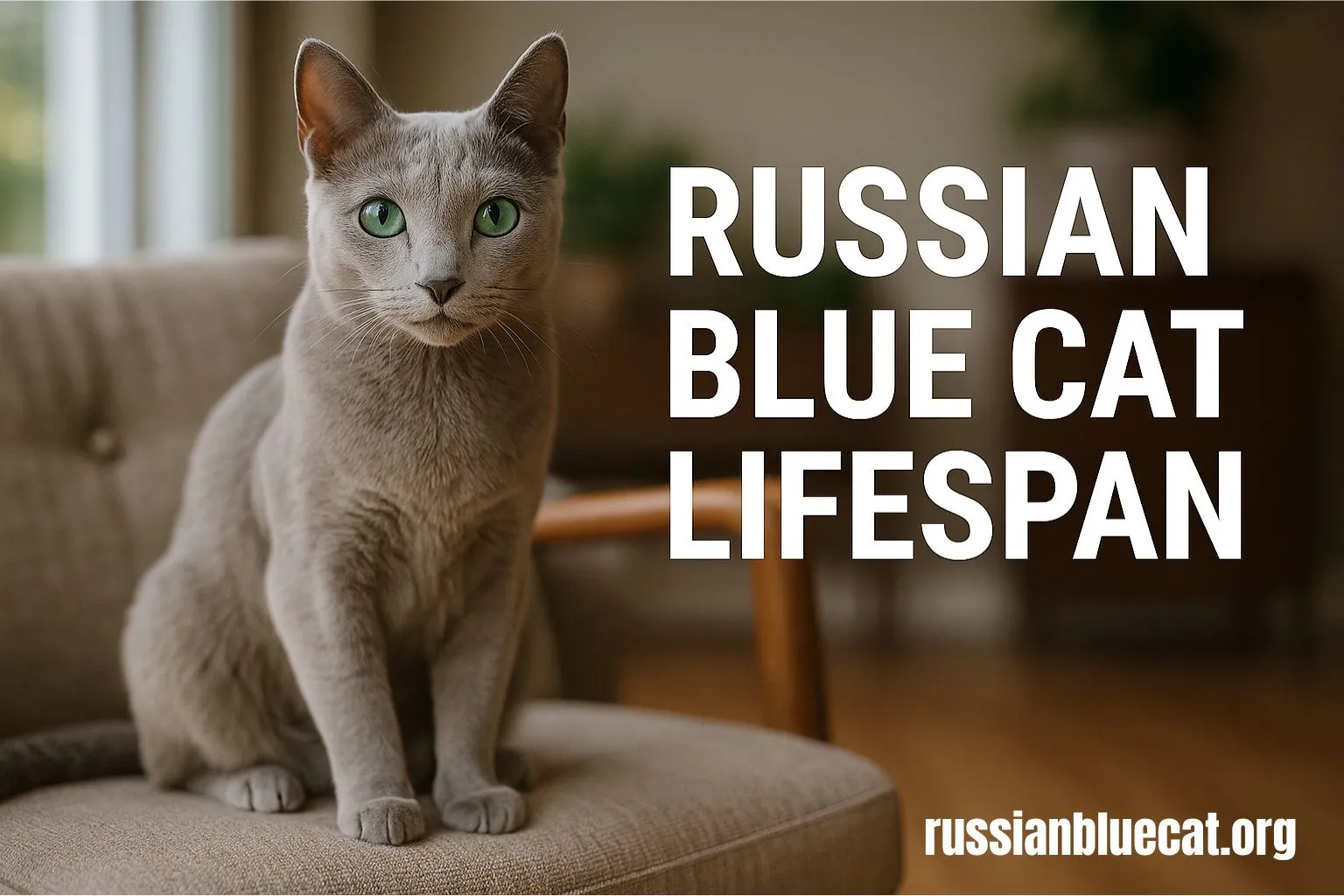
Introduction – The Vow of a Long Friendship
If you’ve ever encountered a Russian Blue Cat, you understand there’s something irresistible about them. The velvety silvery coat, the piercing emerald-green eyes, and that reserved, dignified demeanor all contribute to making them unforgettable. But beyond the allure and refinement is one of the most impressive attributes of this breed: the Russian Blue Cat lifespan, which is often longer than many other cat breeds.
Though most cat breeds have a lifespan ranging from 10 to 15 years, Russian Blues have an average lifespan of 15 to 20 years, with some living longer than 22 years. That is, when you invite a Russian Blue into your family, you’re not bringing home a pet you’re inviting a companion who will be by your side for almost two decades.
This handbook is more than just figures. It’s about knowing what determines your Russian Blue cat lifespan, how you can help determine it, and what daily choices will impact their longevity, health, and happiness.
The Russian Blue Cat Lifespan – What You Can Expect
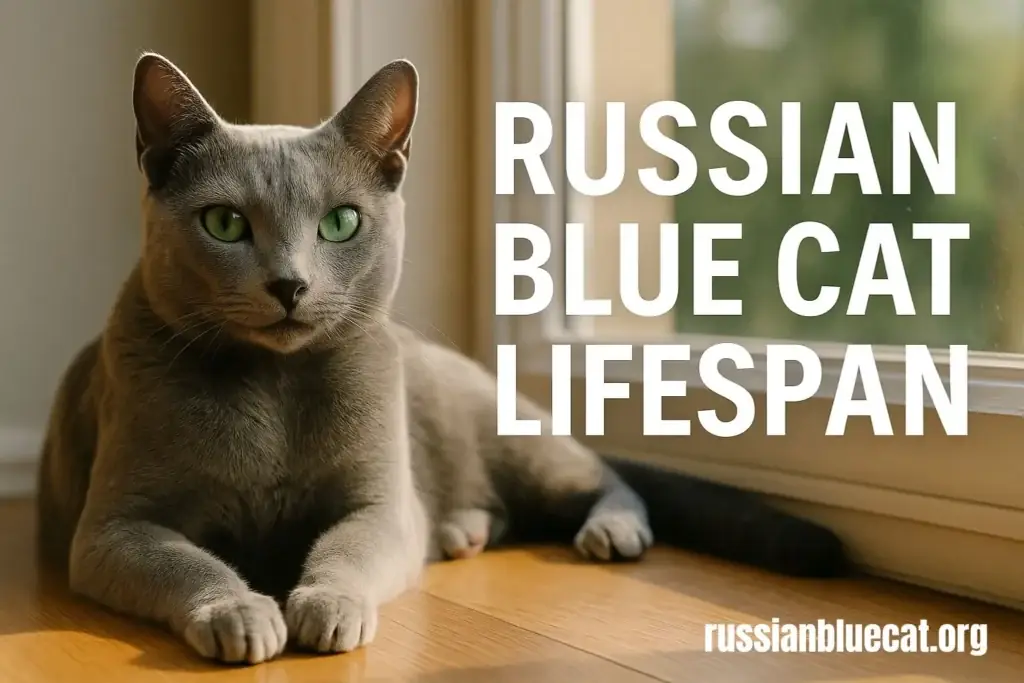
Average Life Expectancy
- Typical range: 15–20 years
- Rare cases: 21–22 years have been reported
- Compared to others: Longer than Maine Coons (10–15 yrs), Persians (12–16 yrs), and roughly the same as Siamese (12–20 yrs).
Russian Blues are among the longest-lived cat breeds, due to their naturally robust genetics and low rate of inherited disease.
Why Russian Blues Live Longer Than Many Cats
Strong Genetics
Unlike intensely inbred breeds, Russian Blues were selectively but responsibly bred for hundreds of years. This results in fewer genetic flaws.
Low-Stress Temperament
They’re naturally calm, reserved, and gentle. Stress can cut a cat’s life short, but Russian Blues avoid drama.
Indoor Adaptability
Some cats miss the outdoors, but Russian Blues adapt wonderfully to being indoors, which protects them from traffic, predators, and infection.
Owner Connection
They form a strong bond with one or two individuals. This attachment makes the owners more observant, leading to enhanced monitoring and care for their health.
Factors That Affect the Russian Blue Cat Lifetime
Genetics – The Baseline
If you adopt your cat from a responsible breeder, there are good chances that the parents of your cat have been tested for conditions such as hypertrophic cardiomyopathy (HCM) and kidney disease. Without this guarantee, the risk of inherited illness is higher. Have you checked our detailed guide on Russian Blue Cat Breeders.
Nutrition – You Are What You Eat
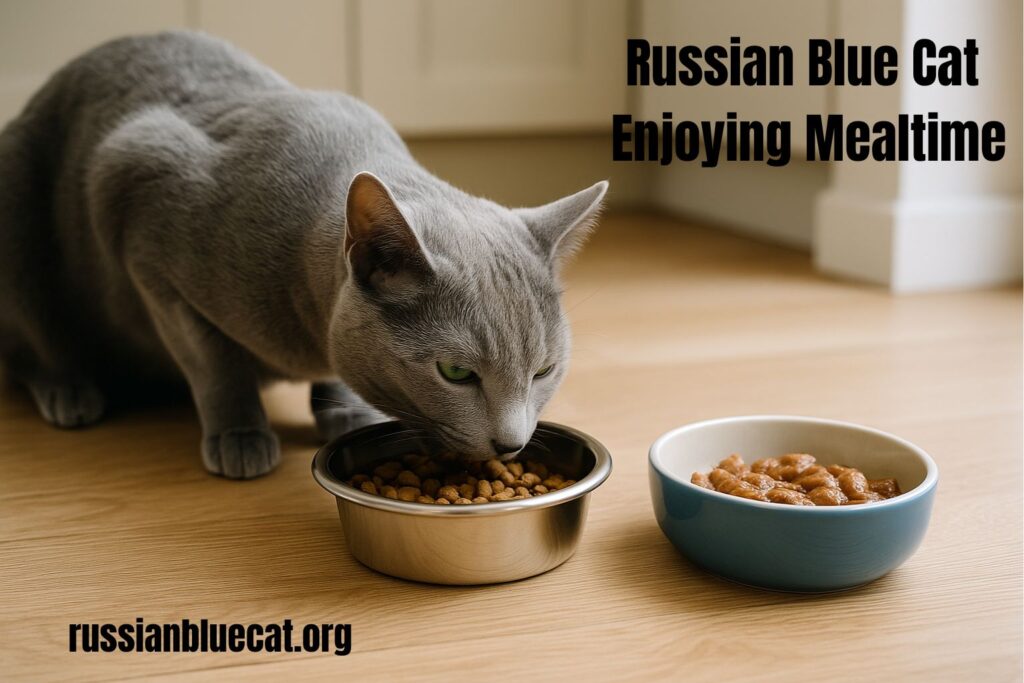
Food is the primary concern for cats. Russian Blues require:
- High protein diets (poultry, fish, or good quality cat food)
- Low carb consumption to maintain a healthy weight
- Moisture-rich meals to help promote urinary health
Overfeeding is actually a threat with this breed. They have an appetite and aren’t afraid to demand it. A controlled diet is probably the easiest way to add years to their life.
Veterinary Care – Prevention Over Cure
A Russian Blue who visits the vet once a year in adulthood and twice a year in old age has much better odds of living a healthy life. Preventive treatment detects silent killers such as diabetes or kidney disease in time. You can check our detailed guide on Russian Blue Cat Care guide.
Lifestyle – Indoors vs Outdoors
- Indoor Russian Blue lifespan: 15–20 years
- Outdoor Russian Blue lifespan: 8–12 years
The disparity is overwhelming. Feral cats are subject to road injuries, wildlife, toxins, and infectious disease. Bringing your Russian Blue indoors is likely the greatest gift you can provide.
Medical Issues That Can Impact Lifespan
Obesity
This is their weak link. Extra pounds cut life short by stressing the heart, joints, and pancreas.
Heart Issues
HCM may occur in some lines. Responsible breeders check for it, but annual vet checks are necessary.
Dental Disease
Unless treated, gum infections will spread infection to the heart and kidneys. Dental care adds years to lifespan.
Urinary Tract Disorders
If dehydrated, Russian Blues can form crystals or stones. Wet food and water intake stimulation is essential.
Feeding for Longevity
The Ideal Diet for Russian Blues
- Good dry food: Maintains healthy teeth
- Moist wet food: Provides hydration and helps avoid urinary problems
- Occasional raw or freeze-dried meals: Imitate natural feline diets (talk to your vet)
- Supplements: Omega-3s for coat, taurine for heart, probiotics for digestion
Feeding Guidelines
- Kittens: 3–4 small meals per day
- Adults: 2 balanced meals a day
- Seniors: Small, frequent meals to facilitate digestion
Portion control is crucial. Russian Blues won’t self-regulate well—they’ll eat cheerfully to excess.
Exercise and Enrichment – Battling Obesity
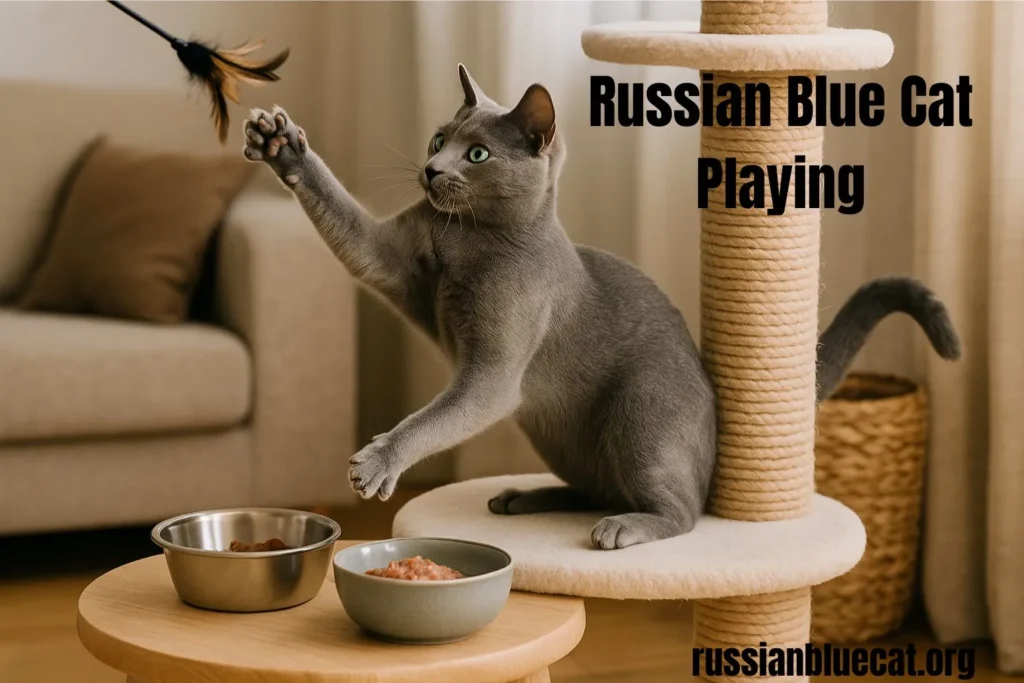
Russian Blues are not hyper but are playful and smart. To keep them active:
- Play with wand toys that simulate hunting
- Utilize climbing trees to promote vertical activity
- Experiment with puzzle feeders to challenge their minds
- Introduce leash walking for adventurous cats
The intent isn’t solely burning calories—it’s keeping them interested and avoiding boredom overeating.
Grooming and Hygiene – Health from the Outside In
Although they have dense coats, Russian Blues do not need rigorous grooming:
- Brushing: Weekly
- Bathing: Infrequent
- Nail trims: Every 2–3 weeks
- Dental care: Brushing 2–3 times a week
- Ear cleaning: Monthly, if necessary
Good grooming doesn’t only make them look dashing—it wards off infections that can affect health.
Russian Blue Cat Life Stages
Kitten (0–1 year)
Accelerated growth, high play level, socialization stage. Early veterinary care is essential.
Adult (1–7 years)
Even energy, optimal health, and deep relationships with owners.
Mature (8–12 years)
Beginning of age signs—slower metabolism, occasional stiffness.
Senior (13+ years)
Biannual vet visits, joint supplements, and special diet become the need of the hour. Russian Blues are known to be sharp and loving right up to their late teens.
Signs of Aging in Russian Blues
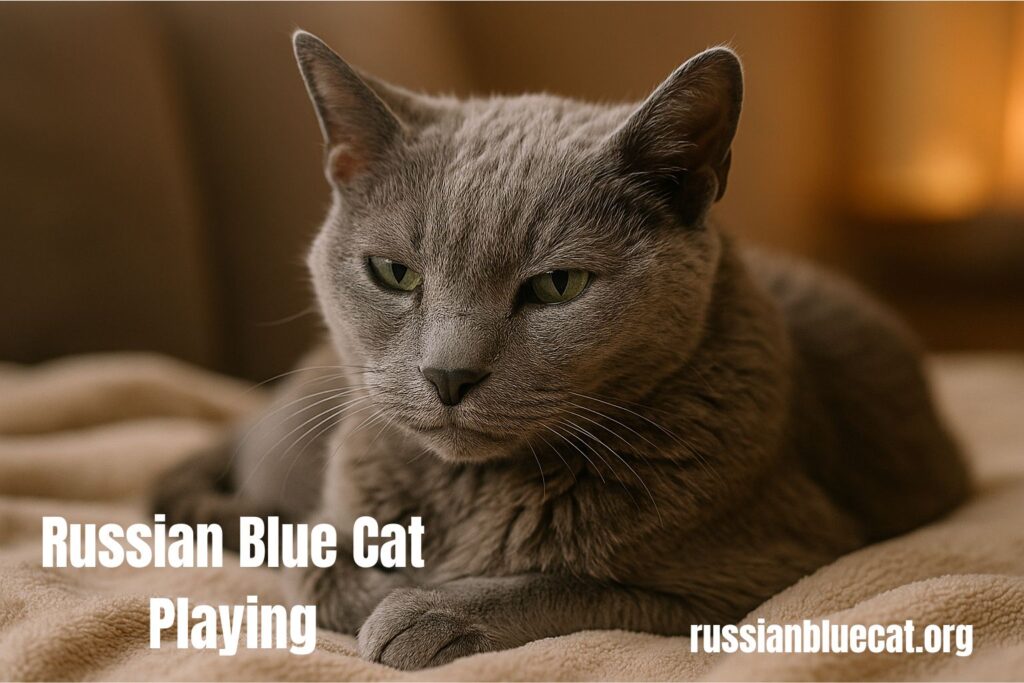
- Sleeping more frequently
- Gradual weight gain or loss
- Dull eyes or loss of hearing
- Slowing down or being reluctant to leap
- Changes in litter box behavior
Catch these signs early so you can modify senior years care.
How to Extend the Russian Blue Cat Lifespan
- Keep them indoors – Outdoor existence significantly reduces years
- Feed a balanced diet – Steer clear of cheap, filler-rich foods
- Prevent obesity – Daily play and regulated portions
- Ensure hydration – Utilize cat fountains to promote drinking
- Prioritize dental care – Avoid gum disease and systemic infections
- Schedule regular vet visits – Annual for adults, twice yearly for seniors
- Provide emotional stability – Stress-free homes result in healthier cats
Russian Blue Cat Lifespan vs Other Breeds
| Breed | Average Lifespan | Notes |
|---|---|---|
| Russian Blue | 15–20+ years | One of the longest living breeds |
| Persian | 12–16 years | Eye and respiratory problems |
| Maine Coon | 10–15 years | Heart disease prevalent |
| Siamese | 12–20 years | Long life, susceptible to heart problems |
| British Shorthair | 14–20 years | Durable, obesity-susceptible |
True Stories from Owners
- Mishka (Sweden): Reached 22 on raw food and indoor life
- Luna (USA): Died peacefully at 20 with regular veterinary attention and a peaceful life
- Sasha (UK): Still going strong at 19, playful and loving, thanks to strict diet and regular play
These cats demonstrate what can be achieved by dedication and care.
FAQs on Russian Blue Cat Lifespan
Conclusion – The Gift of Time
The Russian Blue Cat lifespan is one of the biggest pleasures of having this breed. With their calm nature, elegant appearance, and outstanding health, they provide you with not only years but decades of companionship.
Each choice you make from what they eat to playtime, from indoors to vet visits determines how long and how well they live. And your Russian Blue will return the love, filling your house with silent affection, soft purrs, and faithful companionship for two decades or more.
For additional expert tips on cat care, check out the American Veterinary Medical Association (AVMA)
